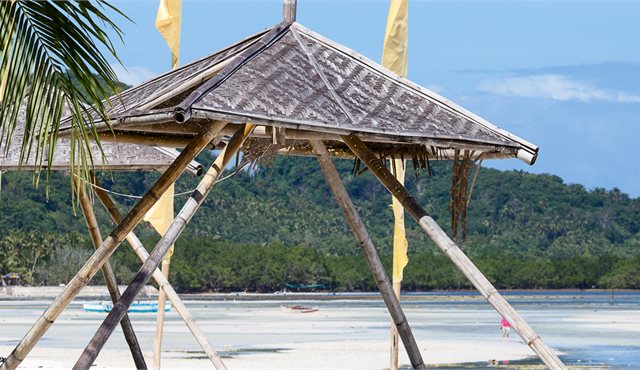It's difficult to think of a more vibrant mixture of a place than the Philippines. It's an archipelago of more than 7,100 islands, with over 180 indigenous ethnic groups, speaking a national language (Tagalog, or Filipino) that is a blend of Spanish, Indonesian and Malay as well as English.
It's a place of religious and cultural festivals that stretch back into antiquity. There's also wonderful Spanish colonial architecture, beautiful tropical beaches to lounge on, breathtaking scenery and wreck diving in clear ocean waters that draws enthusiasts from around the world.
Its more recent history – the Philippines was a US territory from 1898 to 1946, and the cultural links are still strong – makes it an easy destination to visit. Most Filipinos understand and speak English and it is also easy to get around. Ten New Zealand dollars (= 250 PHP – Philippine pesos) will take you four to six hours out of the capital city of Manila by coach or bus. In the larger cities, transport services run 24/7 and there is plenty of choice, from the famous decorated jeepneys (from NZ 30 cents (PHP10); taxi (from NZ$3 (PHP100); or (in Manila) LRT and MRT trains from NZ$2. Hiring a private van in Manila for a day costs from NZ$150 (PHP5,000) and private tour guides and drivers, such as my friend, Mark Villajuan, in Mamburao Occidental on Mindoro Island are also available for regional travel. The price can be fixed before the journey begins.
After that it's simply a case of diving in. If shopping's your thing, Manila boasts the third-largest mall in the world – the SM Mall of Asia, which covers 42 hectares and attracts daily average foot traffic of about 200,000 people. With temperatures reaching 40 degrees Celsius during the summer months of April and May, malls are popular gathering places for Filipino people. The coolest temperatures during the year – around 23 degrees C. – are in the December/Christmas season.
Filipino cultural festivals are a huge aspect of local life and something you must experience. Many feature street dancing, live music played by local marching bands, colourful traditional Baluarte (fort or bastion) decorations, costumes made from local materials, and of course, food. On 15 May each year, my home town of Gumaca, in Quezon province south of Manila, celebrates the festival of Araña Baluarte in honor of San Isidro Labrador, the patron saint of farmers. This is also a thanksgiving feast for the bountiful harvest given to the farmers every year.
After the statue of the patron saint has been paraded around town, all of the Araña Baluarte, which are made from local produce, are released for the people to take home. The celebrations continue into the night with cultural shows and fireworks displays and are not complete without local street foods to enjoy.
Other notable festivals in the Philippines include The Dinagyang, a religious and cultural festival in Iloilo City on Panay Island in the central Philippines. It is held on the fourth Sunday of January right after the Sinulog festival on Cebu Island and the Ati-Atihan festival in Aklan, also on Panay. These worldfamous festivals honour the Santo Niño (Holy Child), one of the most beloved cultural icons in the Philippines, and also celebrate the arrival of Malay settlers in Panay in the 13th century. As a result of Spanish cultural influence, the religious belief of the majority of people in the Philippines is Roman Catholic.
Spanish colonisation, which began in the 16th century, has also left a legacy of splendid architecture, and it is now a major tourist attraction. Although heavy fighting against the Japanese in World War II and natural and man-made disasters have taken a heavy toll in some places, there are still splendid examples of Spanish colonial buildings and monuments to admire in Intramuros, the historic core of Old Manila, and at Las Casas Filipinas de Acuzar, an open-air museum and heritage park on the Bataan Peninsula across Manila Bay. And there are many more architectural sights to see right across the country.
The Philippines’ World War II history has joined with its tropical beauty to make it a world centre for wreck diving. Notable sites are at Subic Bay on the Bataan Peninsula and on the southeastern islands of Coron and Palawan. Both Philippine Airlines and low-cost carrier Cebu Pacific Air offer daily services to the diving hot-spots. If your preferences are for less strenuous pursuits, the Philippines’ splendid beach resorts and eco-tourism experiences make it the perfect spot for a relaxing holiday.
Getting there
Language and currency
Climate



